Poignant tribute to school's war heroes
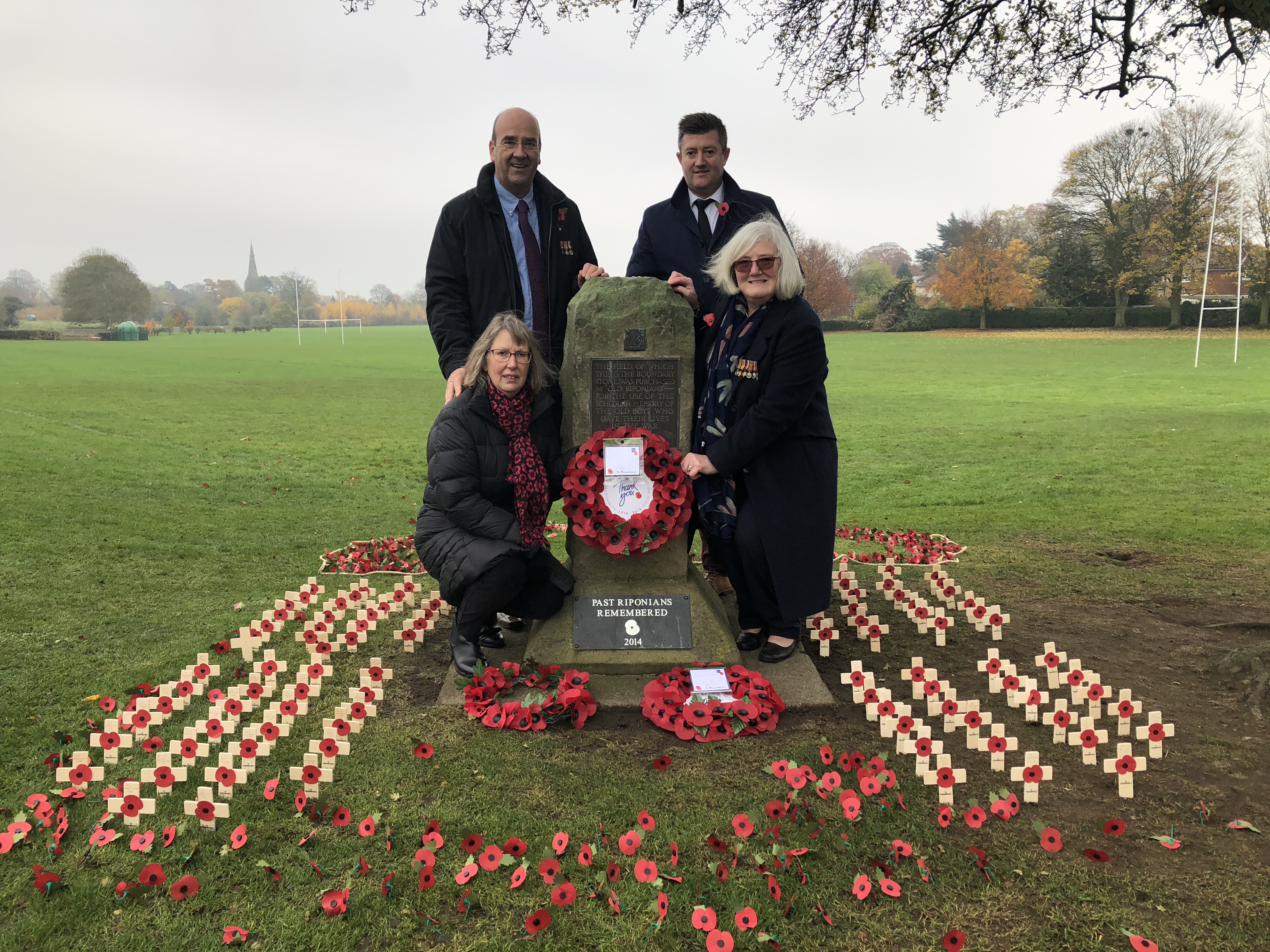
Relatives of five brothers from Ripon Grammar School who served in the First World War led the tributes to those from the school who fought and died for their country at a poignant Act of Remembrance.
The school playing fields were tinged with red as more than 900 pupils laid individual poppies in memory of the 50 former students and masters killed in WW1 and 49 killed in WW2.
Descendants of the Wells brothers laid a wreath in memory of Arthur, who died in action in 1916, aged 22, and his four younger brothers, Norman, Tom, Wilfred and Christopher, who all survived the war.
Among others being remembered were boys from the school's 1913 cricket team. Fifteen out of the sixteen players pictured in their last school photograph together, including Norman Wells, went off to fight. Five never returned.
Given that RGS had fewer than 100 pupils at the time, the scale of the loss was devastating, both for the school and the wider community.
With the nation now preparing to mark the centenary of the end of WW1, more than 1,300 people, including students, former students, staff, parents and the mayors of Harrogate and Ripon, gathered around the school’s Memorial Stone, overlooking the original playing fields where these boys and young men enjoyed playing rugby and cricket before the dark clouds of war changed their lives for ever.
Third formers Eva Scullion and Hetty Simenacz and second former Maisie Willis played the Last Post and the school’s Brass Ensemble performed during the sombre and touching ceremony, when wreaths were also laid by Old Riponians alumni president Derek Crookes and head boy and girl, Thomas Mewes and Sola Sowole.
Until recently, descendants of the Wells brothers didn’t realise two of the younger sons of Ripon wine and spirit merchants Isabella and Arthur Wells had also fought in the war and attended Ripon Grammar School.
But thanks to the Old Rips, who carried out extensive research into the lives of all the school’s war heroes to ensure the stories of their bravery and sacrifice would never fade from our memories, they now have a clearer picture of what happened.
Arthur, a lieutenant in the Northumberland Fusiliers, who joined up when he was 20-years-old in 1914, is one of the 72,337 names on the Thiepval Memorial to the Missing of the Somme in France.
Both Norman and Tom joined up in 1915, when they were aged 19 and 18. Wilfred was 18 when, following Arthur’s death, he went to fight in 1917. And the youngest son, Christopher, only 12 years old when war broke out, volunteered the year after Arthur had been killed, when he was just 16.
Norman’s granddaughter Rachel Wiecek, from Ripon, said it was difficult to comprehend the suffering endured by so many families at that time: “I can’t imagine what my poor great-grandparents must have gone through, losing their first-born, Arthur, and with every one of their sons going off to fight at such a young age.”
She said it was fascinating to find out more about the war record of her grandfather Norman, who fought in both world wars and reached the rank of major: “When I was young, I never asked questions about my grandfather’s army life, something I regret now.”
Wilfred’s grandson Andrew Wells, from Great Ouseburn, said the story of the five Wells brothers reminded him of the plot of the film Saving Private Ryan, although his family was extremely lucky four out of the five brothers survived the conflict.
“They were all so young when they went to fight. Grampie Wells was wounded when he was 19 years old on October 23, 1918 and awarded the military medal for gallantry and conspicuous coolness under heavy shell and machine gun fire in attacking enemy strong points. But he never spoke of his experiences during WW1.
“Laying the wreath helps me remember the five Wells boys, who were part of this great school and then went on to fight in the Great War,” he said. “It was very moving to see all 928 pupils come out onto the playing fields and lay their poppies today. I felt very proud.”
Granddaughter Amanda Allen, from Poulton-le-Flyde, near Blackpool, said she had known little about Arthur: “I wish I'd asked more questions. But thanks to everyone involved, I have learnt so much more. I am so proud of the commitment and sacrifice my grandad and his four brothers made to their country in its time of need.”
Students at the school were also remembering those who fought and died from their families.
Henry Hanson, 15, from Alne, near York, said he was thinking of his two great-grandfathers, who fought in First World War: “Both survived but neither spoke of their time in the trenches. One was gassed and went on to serve in India and Egypt but his health never fully recovered.”
Albert Savage, 16, from Galphay, laid his poppy in memory of his great-great-uncle Cunningham Campbell, who volunteered in Northern Ireland, aged 20, and fought in the Somme and Passchendaele. He died of his injuries after the war, having suffered the effects of mustard gas poisoning.
Sixth former Frank Morgan ,17, from Northallerton, remembered his great-great-uncle who fought at Gallipolli: “He was a man of great kindness and sunny disposition so was always known as Uncle Smiler but suffered all his life with terrible dreams from what he saw.”
Headmaster Jonathan Webb said: “This is a unique opportunity for the whole school to congregate and reflect together on this, the centenary of the ending of the First World War.
“As well as the 99 known Old Rips who died in both world wars, we are remembering those who have served and died in subsequent conflicts and reflecting on the impact war has had on Ripon and its wider community.”
He added: “Remembrance is also a commitment to work towards peace and the resolution of conflict.”
To coincide with the ceremony, the Old Rips organised an exhibition of the WW1 photographs, documents and memorabilia they gathered after scouring military records, school archives and the internet, as well as reading through copies of old school magazines, in order to discover more about those who died.
The stories which unfolded include that of John l’Anson, the first former pupil killed in action at the Battle of Aisne in France on September 20, 1914. He was 31.
Researchers also discovered a letter which Samuel Cartwright, pictured in the 1913 cricket team, wrote to his old school from the Front, explaining how his job was to carry the wounded out of the firing line to casualty stations.
“I can tell you it is pretty warm up there when the artillery are going and the racket of the guns is tremendous,” he wrote. He died, aged 22, after being severely injured at the Front, just six days before the war ended in 1918.
In 1922, the Old Rips purchased a field for the school in memory of those who gave their lives in the 1914-18 war, the boundary of which they marked by installing the commemorative Memorial Stone.
Dr Crookes said: “For our todays, they gave their tomorrows. All our pupils, from 1922 onwards, have benefited from the Memorial sports field given to the school to honour the memory of those who died in the First World War and it is important that we continue to remember them today.”
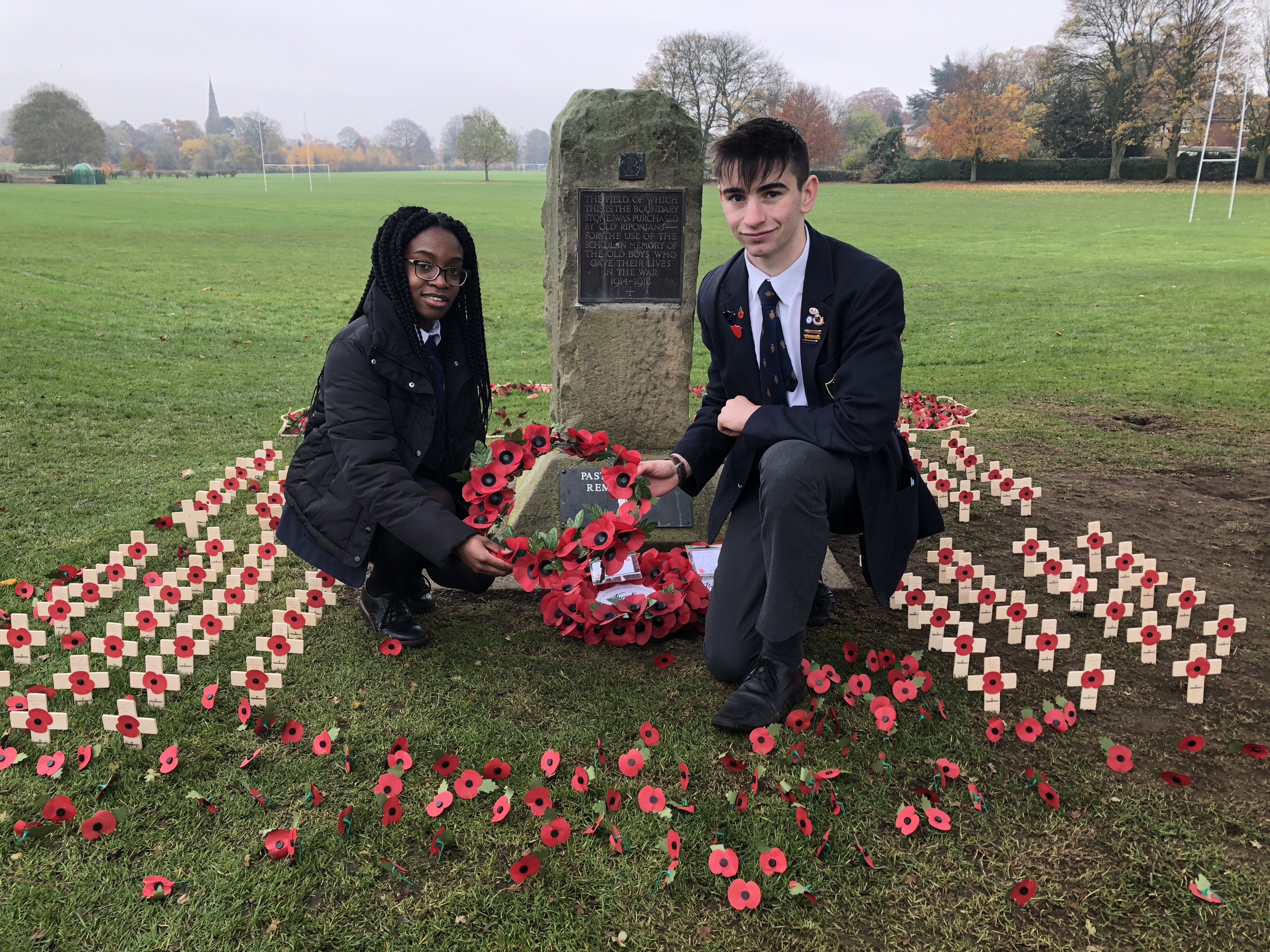
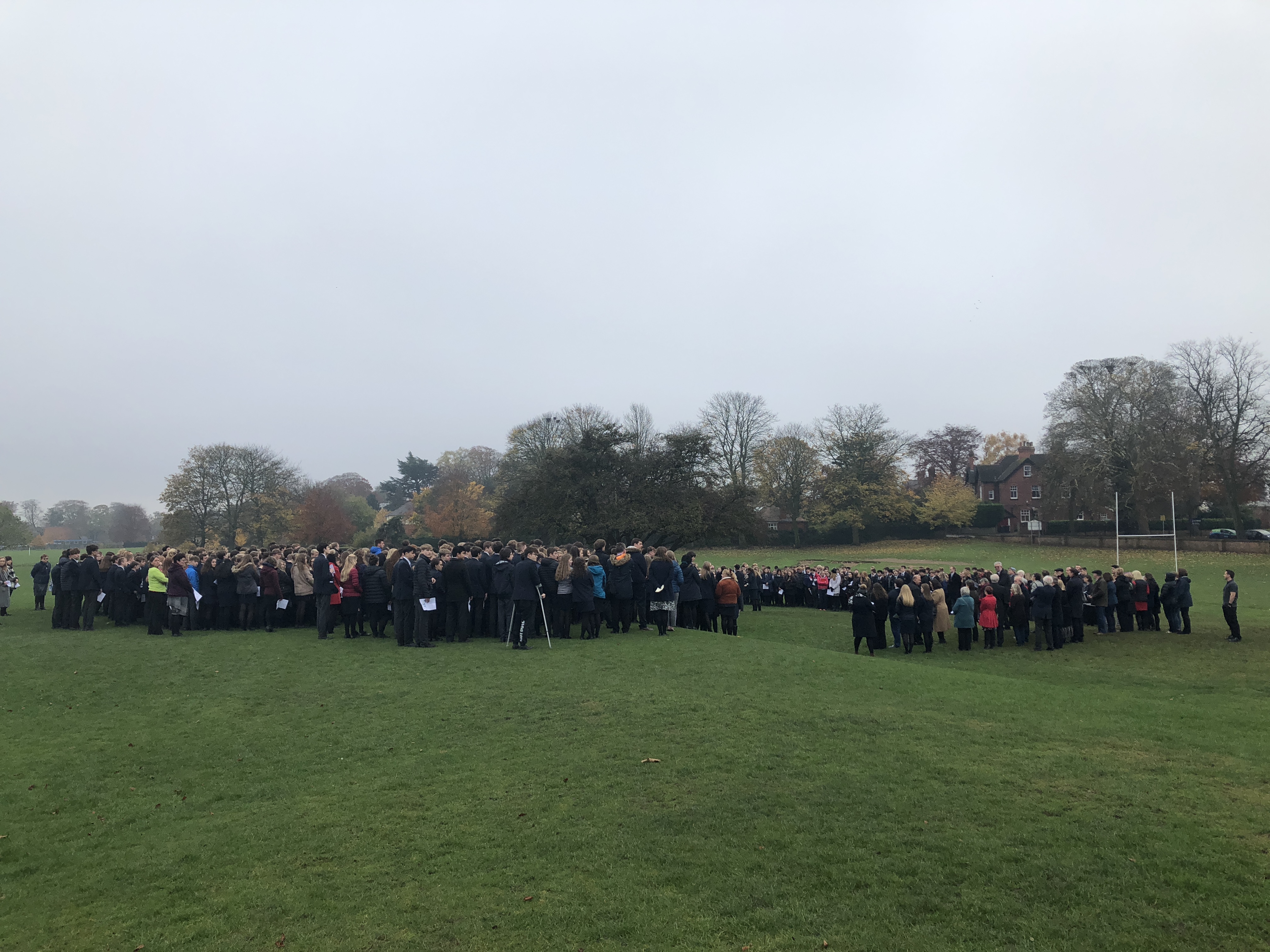
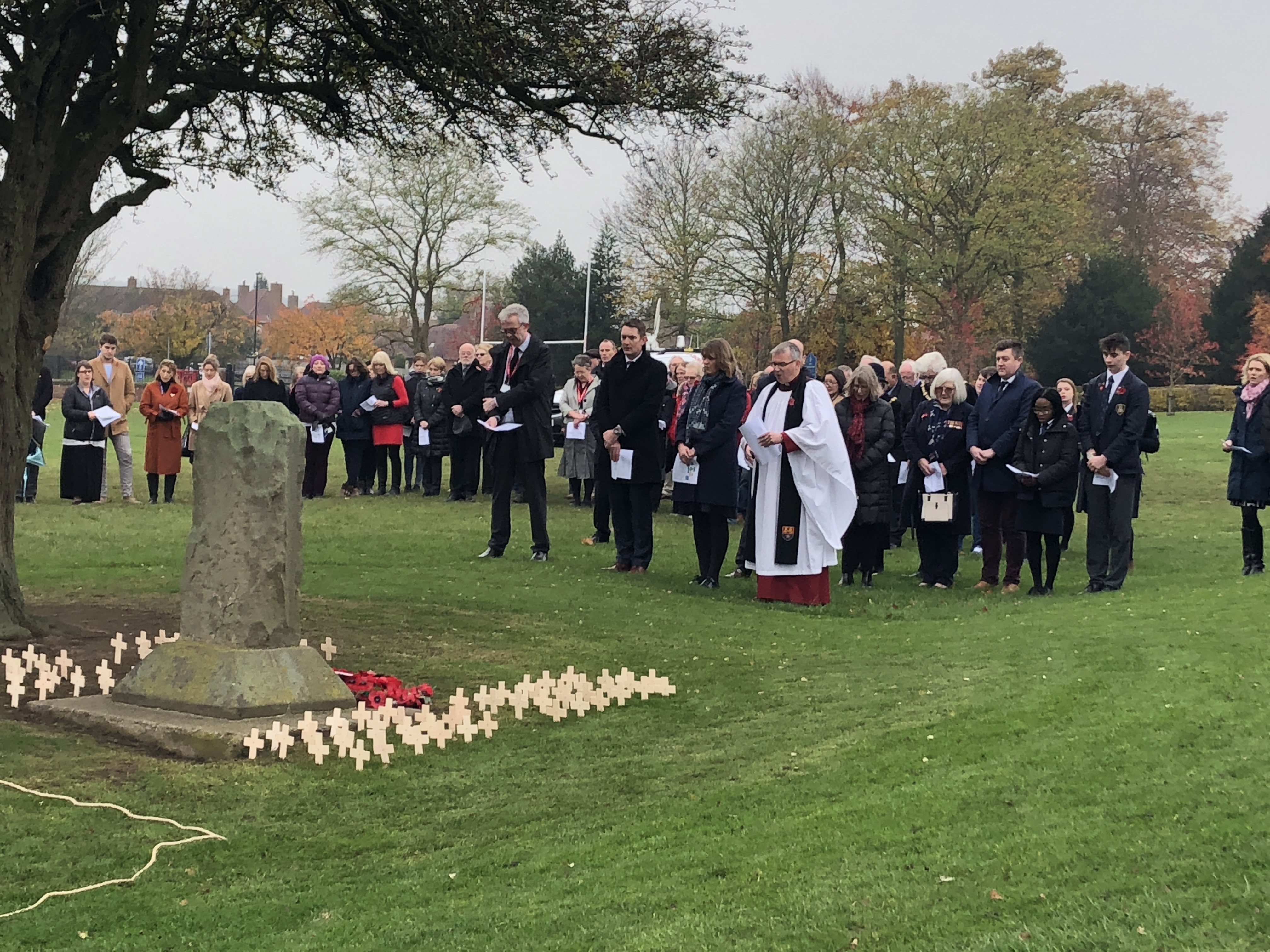
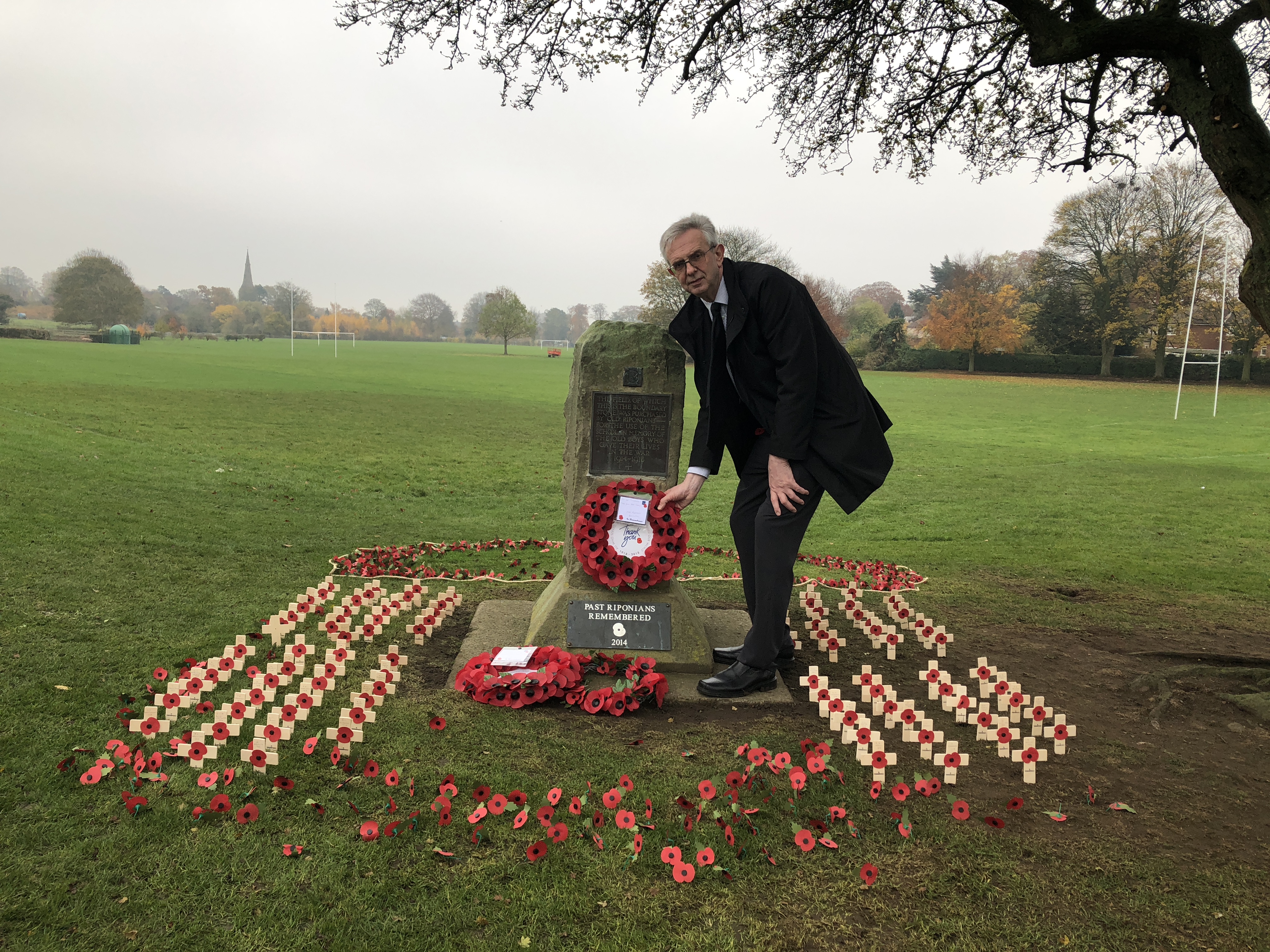
Captions: TOP (l to r) Members of the Wells family, Amanda Allen, Andrew Wells, Chris Smith (son of Rachel) and Rachel Wiecek, SECOND Head boy and head girl Thomas Mewes and Sola Sowole, THIRD The gathering on the playing fields FOURTH The ceremony, with (l to r) Old Rips president Derek Crookes, headmaster Jonathan Webb, chair of governors Elizabeth Jarvis and Canon Michael Gisbourne pictured in the front row FIFTH Derek Crookes with the Old Rips wreath







